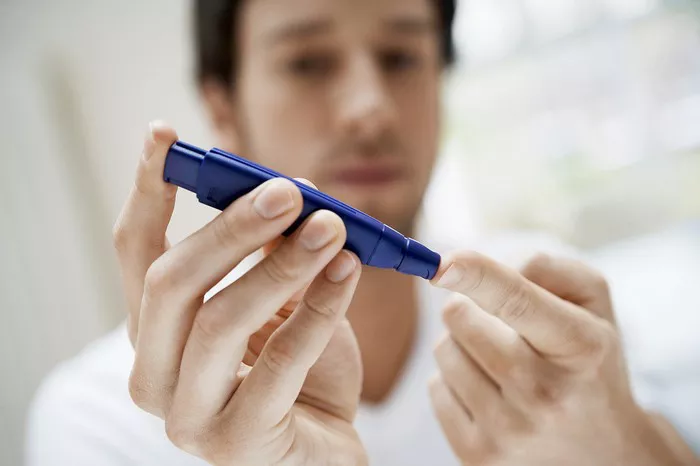Diabetes, a condition characterized by the body’s inability to properly regulate blood glucose (sugar), affects millions of people globally. One critical aspect of managing the risk of diabetes is understanding where one stands in relation to blood glucose levels. Pre-diabetes, a condition where blood glucose levels are higher than normal but not yet high enough to be diagnosed as type 2 diabetes, is often a precursor to the disease. It is essential to recognize and address pre-diabetic levels to help prevent the progression to full-blown diabetes.
Blood glucose levels are regulated by insulin, a hormone produced by the pancreas. Insulin facilitates the absorption of glucose into cells for energy. However, when the body becomes resistant to insulin or the pancreas does not produce enough, blood glucose levels begin to rise, leading to a condition known as insulin resistance, which can eventually develop into diabetes. The stage before diabetes—when glucose levels are elevated but not to the degree that a diagnosis of diabetes is made—is referred to as pre-diabetes.
What Are Pre-Diabetic Blood Glucose Levels?
To understand pre-diabetes, it is important to familiarize yourself with the diagnostic criteria that distinguish normal glucose levels from those considered to be pre-diabetic.
The following three tests are typically used to diagnose pre-diabetes:
1. Fasting Plasma Glucose (FPG) Test
The FPG test measures the amount of glucose in the blood after an overnight fast. This test is one of the most common ways to assess blood sugar levels, and the results are as follows:
Normal range: Less than 100 mg/dL
Pre-diabetic range (impaired fasting glucose): 100-125 mg/dL
Diabetic range: 126 mg/dL or higher
A fasting blood glucose level between 100 mg/dL and 125 mg/dL indicates that a person is at an increased risk of developing type 2 diabetes.
2. Oral Glucose Tolerance Test (OGTT)
The OGTT is another test that measures blood glucose after fasting and again two hours after drinking a sugary solution. The results for this test are as follows:
Normal range (2 hours after glucose intake): Less than 140 mg/dL
Pre-diabetic range (impaired glucose tolerance): 140-199 mg/dL
Diabetic range: 200 mg/dL or higher
A two-hour post-glucose level between 140 mg/dL and 199 mg/dL is an indication of pre-diabetes.
3. Hemoglobin A1c Test
The A1c test measures the average blood glucose levels over the past two to three months. It is commonly used as a diagnostic tool for diabetes. The results are as follows:
Normal range: Less than 5.7%
Pre-diabetic range: 5.7% – 6.4%
Diabetic range: 6.5% or higher
An A1c level between 5.7% and 6.4% is considered pre-diabetic.
Why Is Pre-Diabetes Important?
Pre-diabetes is a critical warning sign. Many people with pre-diabetes do not exhibit any symptoms, which makes the condition difficult to detect without blood tests. Left untreated, pre-diabetes can lead to type 2 diabetes, which can result in serious health complications such as heart disease, kidney damage, nerve damage, and vision problems.
However, the good news is that pre-diabetes is reversible, and taking action can significantly reduce the risk of developing type 2 diabetes. Lifestyle changes, such as improving diet, increasing physical activity, and maintaining a healthy weight, can prevent or delay the onset of full-blown diabetes.
Risk Factors for Developing Pre-Diabetes
Certain factors increase the likelihood of developing pre-diabetes. These risk factors are often interconnected, and understanding them is crucial in identifying individuals who may benefit from early screening for blood glucose abnormalities.
1. Age
As we age, the risk of developing pre-diabetes increases. Adults over the age of 45 are at greater risk, and those aged 65 or older are particularly vulnerable. However, pre-diabetes can occur at any age, especially with the presence of other risk factors.
2. Family History
A family history of diabetes can increase an individual’s risk. If a person has a first-degree relative (parent or sibling) with diabetes, they are more likely to develop pre-diabetes or type 2 diabetes themselves.
3. Obesity
Obesity is one of the most significant risk factors for developing pre-diabetes. Excess fat, especially abdominal fat, can contribute to insulin resistance, which in turn raises blood glucose levels. The higher the body mass index (BMI), the greater the risk of pre-diabetes.
4. Sedentary Lifestyle
A lack of physical activity contributes to obesity, insulin resistance, and elevated blood glucose levels. Regular physical activity helps the body use insulin more effectively and maintains healthy blood glucose levels.
5. Poor Diet
A diet high in processed foods, sugars, and unhealthy fats can contribute to weight gain and insulin resistance. On the other hand, a balanced diet rich in fiber, whole grains, healthy fats, and lean protein can help regulate blood glucose levels.
6. High Blood Pressure
Individuals with high blood pressure (above 140/90 mmHg) are at an increased risk of developing pre-diabetes. This is often due to the close link between insulin resistance, elevated glucose levels, and high blood pressure.
7. Abnormal Cholesterol Levels
An imbalance in cholesterol, particularly high triglyceride levels and low HDL (good cholesterol), is often seen in individuals with pre-diabetes. These lipid imbalances are associated with insulin resistance.
8. Gestational Diabetes
Women who have had gestational diabetes during pregnancy are at a higher risk of developing pre-diabetes later in life. Gestational diabetes is a form of high blood glucose that occurs during pregnancy and increases the likelihood of type 2 diabetes in both the mother and child.
9. Ethnicity
Certain ethnic groups, including African Americans, Hispanic Americans, Native Americans, and Asian Americans, have a higher risk of developing pre-diabetes and type 2 diabetes.
Symptoms of Pre-Diabetes
Pre-diabetes often presents no clear symptoms, which is why it can go unnoticed for years. However, in some cases, individuals may experience symptoms that could indicate elevated blood glucose levels, including:
- Increased thirst
- Frequent urination
- Fatigue
- Blurred vision
- Slow-healing wounds
- Numbness or tingling in the hands or feet
If you experience any of these symptoms, it is important to consult with a healthcare provider for blood glucose testing.
How Pre-Diabetes Can Progress to Diabetes
Without intervention, pre-diabetes often progresses to type 2 diabetes, though not everyone with pre-diabetes will develop diabetes. The transition occurs when the body’s insulin resistance worsens, causing blood glucose levels to rise beyond the threshold for pre-diabetes. When this happens, the pancreas cannot produce enough insulin to keep blood sugar at normal levels, and diabetes develops.
The progression from pre-diabetes to diabetes can be influenced by a variety of factors, including genetics, lifestyle choices, and overall health. However, the key takeaway is that pre-diabetes is a critical warning sign, and early action can often prevent or delay the onset of diabetes.
Preventing the Progression from Pre-Diabetes to Diabetes
If you are diagnosed with pre-diabetes, there are several steps you can take to reduce your risk of developing type 2 diabetes:
1. Lifestyle Changes
Making changes to your daily habits is the most effective way to prevent or manage pre-diabetes. These changes include:
Adopting a healthy diet: Focus on a well-balanced diet that includes whole grains, lean proteins, fruits, vegetables, and healthy fats. Limit processed foods and added sugars.
Incorporating regular physical activity: Aim for at least 30 minutes of moderate-intensity exercise (like brisk walking) most days of the week.
Losing weight: If you are overweight, even a modest weight loss (5-10% of your body weight) can significantly reduce the risk of developing type 2 diabetes.
2. Medication
In some cases, a healthcare provider may prescribe medications to help control blood glucose levels in individuals with pre-diabetes. Metformin, for example, is commonly used to improve insulin sensitivity and lower blood sugar levels.
3. Regular Monitoring
If you have pre-diabetes, it is important to monitor your blood glucose levels regularly to detect any changes. Regular check-ups with a healthcare provider will help ensure that you are on track to manage the condition and prevent the progression to type 2 diabetes.
Conclusion
Pre-diabetes is a serious health condition that requires attention and action. By understanding the criteria for pre-diabetic blood glucose levels and taking steps to make lifestyle changes, individuals can significantly reduce their risk of developing type 2 diabetes. Early detection, along with improved dietary habits, increased physical activity, and weight management, can help prevent the progression of pre-diabetes to diabetes. If you or someone you know is at risk for pre-diabetes, seek guidance from a healthcare provider for proper diagnosis and personalized prevention strategies.
Related topics:
When Should a Prediabetic Check Their Blood Sugar?


























